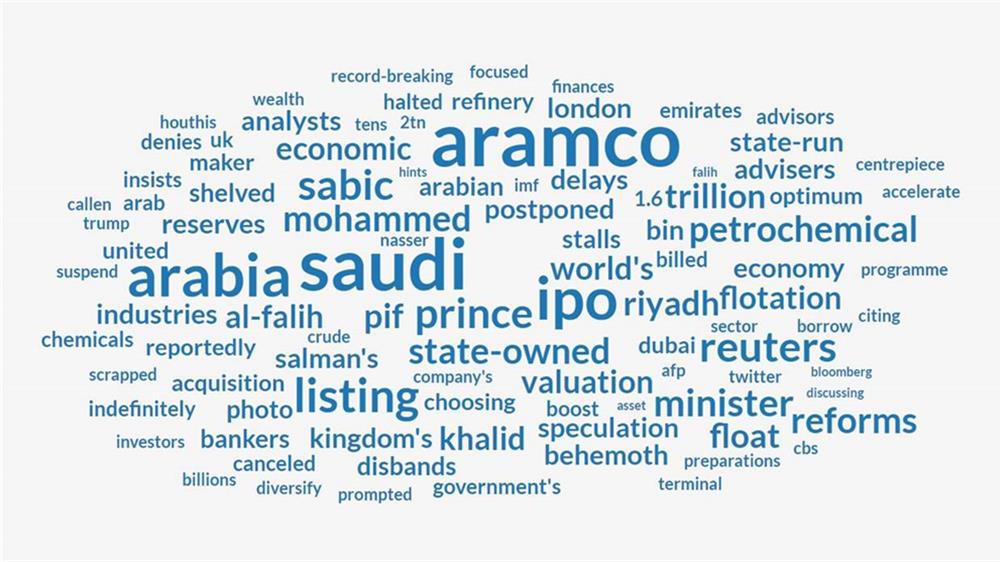لحظة الانكسار الأولى تختلف بين صحفي وآخر، لكنها قد تأتي في يومك الأول بقاعة التحرير.. تحمل أعوامك العشرين، وأحلامك بتغيير العالم، وإيمانك بسطوة الكلمة؛ إلى حلقة محررين كهول في صحيفة محلية.. مهمتك الأولى: اصنع خبرا من هذا البيان الصحفي.
الصفحات الثلاث الخارجة للتو من الفاكس الباهت الحبر تتحول إلى 50 كلمة تقدمها إلى سكرتير التحرير وأنت ضجر.. المهمة تافهة، والخبر تافه، لكنك لا تجرؤ على رميه في سلة المهملات.
هل جدّفت بحق إله ما للمهنة؟ ربما، فقد امتقع وجه المدير: "لماذا خسفت الخبر؟".
تسأل أكثر الكهول شبابا لتعرف أن المطلوب هو أن "تغير اليوم إلى أمس" وتصلح الأخطاء الإملائية والنحوية.
درسك الأول: الصحفي ببغاء.
في مواجهة المسخ
كانت تلك صحيفة محلية تافهة الحجم والتأثير.. الفرص اليوم أكثر، والتنافس أكبر، والتدريب أوفر، لكن مشروع "مسخ الصحفيين" متواصل.
مهنة تتغير بسرعة فائقة.. صحفيون محبطون يعانون قلقا وجوديا.. نظام إعلامي موبوء بسطوة المسؤول والتقاليد الفاسدة والولاءات.. فشل في توطين تكنولوجيا الإعلام، وخلط في فهم "السوشيال ميديا". كلها ظروف مثالية لتحويل الصحفي إلى مسخ: ببغاء يعبد المسؤول، ديناصور يجتر التجارب الفاشلة، أو ضبع يقتات على كل فاسد وكاذب ونتن من الأنباء.
هذا ما يحدث في عشرات من قاعات التحرير العربية: الصحفي "الشاطر" هو بمثابة "لص" يعرف كيف يخفي أثره، فهو يجمع معلومات متناثرة من أبخس المصادر، يرتقها في تقرير بائس، يبهرها بكليشيهات ووعود كاذبة تتسول اهتمام المشاهد النزق، ثم يتباهى أمام مديريه بأنه فتح النار على أعداء ما، وحقق "ترافيك" ومشاهدات لا تعد، وطبعا دون أن يغادر كرسيه.
لا تكن هذا المسخ! المقاومة فردية أساسا، والتزام مهني شخصي يضمن لك ألا تكون وقود مرحلة بائسة سريع الاشتعال والانطفاء.
الصحفي الببغاء
تقول الحكومة إن القطاع الزراعي نما في الربع السنوي الرابع 300%.. تنسخ الصحف والمواقع الإخبارية البيان وتقدمه كخبر. لو فكر المحرر دقيقتين لتذكر أن موسم الزيتون هو ذروة الإنتاج الزراعي في البلد.. الحكومة تنسب لنفسها الفضل في تبدل الفصول.. كان الناس يقطفون الزيتون في الخريف (الربع الرابع) قبل أن تأتي الحكومة، وسيظلون يقطفونه في الخريف بعد رحيلها.
محررو الديسك -لو عرفتهم في وسائل الإعلام المحلية تحديدا- قدريون ساخرون، يروون قصصا عن بؤس أدوارهم لا تعرف فيها الجد من الهزل، ويحدثونك عن المحرر الذي استلم بيانا من الشرطة عن انقلاب شاحنة تحمل دجاجا.. أطنب المحرر في وصف الدجاج الذي ركض في كل اتجاه وقفز على المارة، ليكتشف لاحقا أن الشاحنة كانت تحمل دجاجا مجمدا.
كم أنطق محررو الديسك مسؤولين في فعاليات لم يحضروها وكتبوا عن أنشطة لم تحدث، لأن البيان الصحفي كان معدا سلفا ووصلهم بالخطأ!
من يغري من بارتكاب هذه الأخطاء؟
لطالما شكا الأطباء من التبسيط المخل واليقين الزائد في التغطية الصحفية للأبحاث الطبية.. هل تتذكر كم مرة قرأت فيها أخبارا عن تأثير القهوة على الصحة؟ هي في صحيفة اليوم سم زعاف وفي صحيفة الغد بلسم شاف.
هناك تراكم بحثي جيد يدرس هذه الظاهرة.. البيان الصحفي هو المتهم الأول.. رجال العلاقات العامة يكتبون بيانات وفي بالهم إغراء المحرر للنشر، والنتيجة هي التعميم والتشويه والتبسيط لنتائج أبحاث لا تدعي اليقين أساسا (1).
لكن لماذا ينشر الصحفي ما يصله هكذا دون نقد؟
لمن الولاء اليوم؟
الإشكالية أعقد بالطبع من بهرجة أو اختلاق خبر، ولها أساس فلسفي وتاريخي.. يقوم النموذج النظري للصحافة المستقلة على الولاء الخالص للجمهور، إذ تجتهد الصحافة في خدمة الجمهور فيكافئها بمتابعة أكبر.. الولاء يعني بالضرورة أن يكون المنتج الصحفي مفيدا، متنوعا، صادقا، وشجاعا في الدفاع عن مصلحة الجمهور، وهذا يعني أن المعلومات دقيقة، وموضوعة في سياق مناسب، ومصوغة بأسلوب احترافي لا تؤدي الإثارة فيه إلى التضليل.
هذا نموذج نظري معياري بالطبع.. تاريخيا، اقتربت الصحافة أحيانا وابتعدت في أحيان أخرى عن تحقيق مُثلها المعيارية، وهذا طبيعي إلى حد ما. لكن الإطار المعياري يظل مهمًّا لأنه مكرس في القوانين والأخلاقيات، فعندما يحاكم الجمهور الصحافة يحاكمها بناء على هذا الإطار المعياري، وهو "العقد الاجتماعي" للصحافة (2).. لكن الأخيرة الآن بعيدة جدا عن مُثلها.
التناقض أساس
مصلحة الجمهور هي بوصلة الصحافة.. ومصلحة المؤسسة هي بوصلة "العلاقات العامة".. وظيفة الإعلام أن يكشف أخطاء المؤسسات، لكن المؤسسة تفضل دائما أن تنظف بيتها الداخلي بدون ضجة.. الشفافية ضرورة للصحافة الحرة، لكنها أداة في حقل العلاقات العامة.
العدالة التزام أساسي في الصحافة (يضمن لك القانون الحرية، لكنه يشترط عليك العدالة).. العلاقات العامة ترف يقدر عليه الغني فقط.. لا عدالة مجتمعية في صناعة العلاقات العامة، والترويج فن منحاز إلى أصحاب السلطة وقد يستخدم الشفافية دون أن يلتزم بها مطلقا.
هذه تناقضات أساسية بين فلسفتين وقطاعين لا تحله مواثيق الشرف التي تلزم مديري العلاقات العامة بأداء أمين، نزيه، ينشد الحقيقة (3).. في المرة المقبلة التي تحرر فيها بيانا صحفيا، تذكر هذا التناقض.
السم
يظهر هذا التناقض بوضوح في سيرة آيفي لي (1877-1934) الذي يلقب بأبي العلاقات العامة.. رأى لي أن وظيفة رجال العلاقات العامة هي تحفيز العقل الجمعي لجمهور ما على امتلاك صورة حسنة للمؤسسة التي يخدمونها، وذلك بالعمل المنهجي المهني، الملتزم أخلاقيا.
رغم ذلك، كانت البيانات التي يبعثها لي إلى الصحف (نيابة عن شركة روكفيلر) مليئة بالخديعة، حتى أطلق عليه المحررون لقب آيفي السام (هنا لعبة لغوية، فالاسم يشير حرفيا إلى صنف سام من نبات اللبلاب المنتشر في الولايات المتحدة) (4).
يرفض لي الكذب الصريح، لكنه لا يمانع في خلق انطباع كاذب بأن كل شيء على ما يرام، وبذلك يصبح الصحفي ورجل العلاقات العامة شريكين في تأليف الكذبة.
تعاليم العلاقات العامة تفيد: ما تقوله ليس مهما، المهم كيف تقوله.. الابتسامة والأداء الجذابان يصنعان العجائب.
محور مهنة العلاقات العامة هو تقديم حقائق منتقاة ووضعها في سياق مقصود يدفع الصحفي إلى تكوين انطباع صديق للمؤسسة.
ماذا تغير منذ ذلك الحين؟ صارت أساليب العلاقات العامة أكثر حرفية وتعقيدا، لكن التناقض لا يزال قائما.
لنتحدث عن أرامكو
خدم آيفي لي شركة روكفيلر، وكانت الأكبر في العالم.. اليوم، يخدم كثيرون شركة أرامكو التي تقول السعودية إنها الشركة الأكبر في العالم من حيث القيمة السوقية (القيمة السوقية للشركة تقدر بين تريليون وتريليوني دولار.. لا أحد يعرف بالضبط).
اليوم، هناك ثلاث شركات فقط تتجاوز قيمتها السوقية تريليون دولار: أرامكو وآبل وأمازون.. تتحكم أرامكو في جزء كبير من الاقتصاد السعودي (أكبر اقتصاد عربي)، وفي جزء كبير من سوق الطاقة في العالم، وهي شركة تملكها الحكومة.
في وضع طبيعي، ستقرأ وتشاهد تقارير دورية تراقب أداء أرامكو وتحلله وتخضعه للمحاسبة الجماهيرية.. هذا لا يحدث بالطبع، فأرامكو صندوق محكم الإغلاق، لكنك لو زرت موقع الشركة وتلقيت بياناتها الصحفية لأغرقتك بالمعلومات. فهل هذه معلومات "مهمة" و"مفيدة" و"مفهومة"؟
الإعلام العربي الذي تملكه أو تحكم أجندته السعودية على الأخص، ينقل بيانات أرامكو دون أن يوجه أية أسئلة.. "فالسلطة المطلقة مفسدة مطلقة": هل أرامكو فوق هذه القاعدة؟ وهل من سبيل إلى الثقة بمن يديرون المال دون شفافية؟ هذه أسئلة عامة وبديهية.
لا يمكن الحديث عن إعلام حقيقي في العالم العربي دون أن تكون أرامكو من مواضيعه الأولى، فهي "الفيل في الغرفة". بيد أن أرامكو تتقن لعبة العلاقات العامة تجاه الإعلام الدولي أيضا.. أساس اللعبة هو الإغراق والإغراء وتقديم أنصاف الحقائق.
أسرى البيان
تراجعت السعودية مؤخرا (نهائيا؟ لا أحد يعرف!) عن طرح نسبة من أسهم الشركة للاكتتاب العام، وقد نقلت رويترز الخبر مجهّلا (5). تناقل الإعلام بعدئذ بيانات وتصريحات متناقضة وشحيحة عن الأمر.. التناقض والتصريحات المجهولة المصدر مؤشر على صراع ما في العادة.. مثير، أليس كذلك؟ مثير أكثر، ربما ظل الإعلام العربي -في أغلبه- أسير البيانات الصحفية.. ظل أسير أرامكو، فهل كان أداء الإعلام الأميركي أفضل؟ ليس كثيرا.
أرامكو كانت موضوع 64 قصة نشرتها مواقع الأخبار الأميركية بين 17 أغسطس/آب 2018 و17 سبتمبر/أيلول 2018.. أغلب هذه القصص كان إعادة تحرير لسلسلة أخبار/تسريبات نشرتها رويترز. وللمقارنة، كانت آبل موضوع 3388 قصة إخبارية، وكانت أمازون موضوع 2831 قصة إخبارية في الفترة ذاتها، فمقابل كل 44 قصة عن أمازون، نشرت وسائل الإعلام الأميركية تقريرا واحدا عن أرامكو، وذلك في شهر مصيري لمستقبل الشركة الأثمن في العالم (6).
هذه التغطية لم تكن شحيحة فقط، بل كانت أيضا فقيرة معلوماتيا، فالكلمات الأكثر ورودا في القصص الـ64 تقدم معلومات تعريفية أساسية منسوخة عن رويترز تحديدا، وكانت التغطية خبرية بحتة، مالية أساسا، وإيجابية في المجمل.. تغطية تشبه البيان الصحفي. هذه هي خريطة الكلمات المفتاحية من قاعدة بيانات الإعلام الأميركي في معهد ماساشوستس للتكنولوجيا:

للمقارنة، كانت أكثر الكلمات شيوعا في تغطيات أبل وأمازون تتعلق بمنتجات الشركتين، والمنافسة التي تخوضانها مع شركات أخرى، والجدل حول دورهما في السوق والمجتمع. خرائط الكلمات المفتاحية أدناه ترسم صورة تغطية صحفية جادة وتفصيلية.
الكلمات الأكثر شيوعا في تغطية الإعلام الأميركية لشركة أبل (17 أغسطس/آب 2018 و17 سبتمبر/أيلول 2018):

الكلمات الأكثر شيوعا في تغطية الإعلام الأميركية لشركة أمازون (17 أغسطس/آب 2018 و17 سبتمبر/أيلول 2018):

وجوه أخرى للأزمة
أرامكو ليست الشركة الوحيدة التي تصنع تغطيتها، فالعلاقات العامة مصدر أساسي لنحو 40-70% من المحتوى الإعلامي باللغة الإنجليزية (7)، وهي نسب تتزايد لأن الإعلام الرقمي يترسخ جماهيريا دون أن يكون له نموذج تمويلي فعال. وبذلك نجد مزيدا من الاعتماد المالي على الإعلانات التحريرية والمحتوى المرعي (Sponsored Content).
تطرح هذه الأشكال الصحفية الجديدة تحديات أخلاقية جمة على الصحفيين.. لا قواعد ثابتة بعد اليوم. لقد وجد باحثون أن ثماني مدونات أخلاقية من أصل 40 مدونة مهنية في الولايات المتحدة وفنلندا تذكر المحتوى المرعي بالاسم (8).. يحدث هذا في دول ذات تقاليد صحفية راسخة تفتخر بالفصل بين المحتوى التحريري والمصالح التجارية في مؤسسات الإعلام، فكيف هو الوضع في بلداننا يا ترى؟
تكنولوجيا الإعلام تتغير بسرعة، لكن الافتراض الذي يحكمها يبدو واحدا: لا حاجة إلى دور الصحافة التقليدي في فلترة المعلومات وصنع الأجندات.. الصحافة لوحة إعلانية تؤجر بالقطعة. الحقيقة أن الإعلام الرقمي يتيح إمكانيات وأشكالا أكثر مكرا في الدمج بين الترويج والإعلام، وهو ما يطرح حاجة ماسة إلى إطار معياري جديد يضمن استقلالية الصحافة في العصر الرقمي (9).
هذا التأثير يبدو مضاعفا في الصحافة العربية، حيث تسود ثقافة النقل على العقل، ويملك أصحاب المؤسسات الإعلامية نظرة استخدامية ضيقة الأفق.
وبعد..
الصورة قاتمة، أليس كذلك؟ تذكّر أنك لست مسلوب الإرادة أمام التحديات.. لم يقبل المحرر الشاب في الصحيفة المحلية أن يتحول إلى ببغاء.. سافر، تعلّم، واجتهد.. فازَ بالرضا عن الذات، وحقق مسيرة مهنية معقولة.. ارتضى زملاء آخرون دور الببغاء.. هم في مكانهم بعد 16 عاما يصححون الأخطاء الإملائية في البيانات التي تردهم وينشرونها كما هي، وبعضهم تحول إلى ديناصورات وآخرون إلى ضباع.
الفهم العميق للواقع الصحفي بكل تحدياته ضروري، لكنْ تذكّر أنك تفقد مبرر وجودك كصحفي في اللحظة التي تغيّر فيها ولاءك.. البيانات الصحفية مصدر للمعلومات، لكن تعلّم أن تنجو من سطوتها، وتذكّر: هذه أنصاف حقائق موضوعة في سياق يخدم من بعثها لك.. وظيفتك أن تدقق بياناتها، تستكملها وتوازنها وتضعها في السياق الذي يخدم جمهورك. مصادرك ثلاثة: البشر والوثائق والحواس.. إذا ركنت إلى واحد منها فقط تحولت إما إلى منصة أو مؤرخ أو فنان.. استعمل مصادرك كلها.. أعمل حواسك وتعلم أن ترى.. ألا تكتفي بالنظر.
تعلّم كيف تراجع البيانات وتحللها وتوثقها، وابنِ شبكة مصادر بين المواطنين أولا، وصناع القرار ثانيا، والخبراء ثالثا.. الصحافة صنعة تشمل هذه المكونات كلها.. أتقنْ صنعتك فهي حبل نجاتك، والحل فردي مهاري أساسا.
المصادر:
1- Brechman, J. M., Lee, C., & Cappella, J. N. 2009. "Lost in Translation? A Comparison of Cancer-Genetics Reporting in the Press Release and its Subsequent Coverage in Lay Press." Science Communication 453–474.
2- Carlson, Matt. 2014. "When news sites go native: Redefining the advertising–editorial divide in response to native advertising." Journalism 849 – 865.
3- Marlin, Randal. 2002. Propoganda & the Ethics of Persuasion. Ontario: Broadview Press, LTD.
4- Marlin, Randal. 2002. Propoganda & the Ethics of Persuasion. Ontario: Broadview Press, LTD.
5- كلارا دينينا، أليكس لولر، ومروة رشاد، 22 أغسطس/آب 2018. حصري-مصادر: وقف خطة طرح أرامكو السعودية وتسريح مستشاري العملية، لندن/الرياض: رويترز. https://ara.reuters.com/article/businessNews/idARAKCN1L71US.
6- 2018. Explorer. September 17 https://explorer.mediacloud.org/#/queries/demo/search?q=[{%22index%22:0,%22q%22:%22Aramco%22,%22color%22:%22%231f77b4%22},{%22index%22:1,%22q%22:%22apple%22,%22color%22:%22%23ff7f0e%22},{%22index%22:2,%22q%22:%22amazon%22,%22color%22:%22%232ca02c%22.
7- Macnamara, Jim. 2014. "Journalism–PR relations revisited: The good news, the bad news, and insights into tomorrow's news." Public Relations Review 40 (5): 739-750.
8- Werder, Kelly Page, Howard Nothhaft, Dejan Ver?i?, and Ansgar Zerfass. 2018. "Strategic Communication as an Emerging Interdisciplinary Paradigm." International Journal of Strategic Communication 333-351.
9- Christians, Clifford G., Theodore L. Glasser, Denis McQuail, Kaarle Nordenstreng, and Robert A. White. 2009. Normative Theories of the Media: Journalism in Democratic Societies. Champaign, Illinois: University of Illinois Press.







































